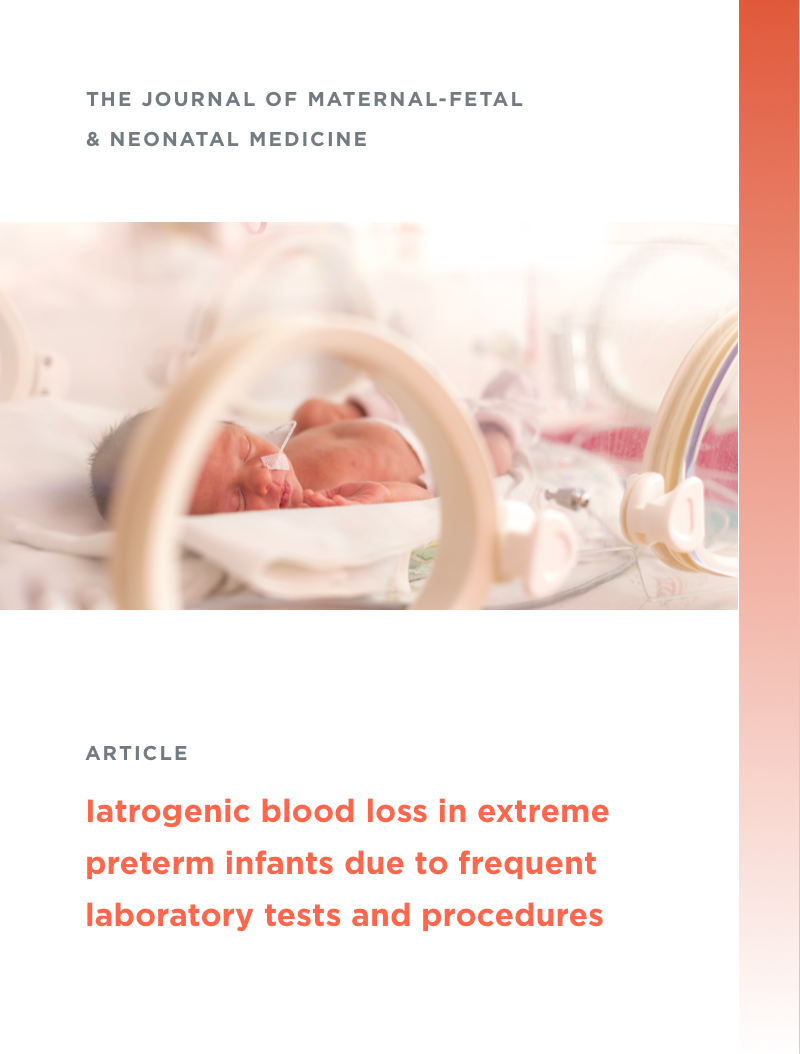The average extremely preterm infant loses nearly one-third of their blood volume in the first month of life. But why? Extremely preterm (<28 weeks) infants require precise care and acute monitoring of substances in the blood—CO2 being one example—therefore, blood is drawn frequently for laboratory investigations and procedures. The blood loss from the frequent draws can cause anemia of prematurity, leading to transfusion and all the associated risks of mortality and morbidities such as infection and NEC.
In the article “Iatrogenic blood loss in extreme preterm infants due to frequent laboratory tests and procedures” by The Journal of Maternal-Fetal & Neonatal Medicine, published last year, the authors outline the impact of iatrogenic blood loss on preterm infants and steps to take to reduce it.
Transcutaneous monitors enable non-invasive measurement of patients’ CO2 levels, which may decrease the need for frequent blood draws without sacrificing visibility to this critical parameter1. Although blood draws will likely never be eliminated from the NICU, efforts to reduce unnecessary blood loss are in the patient’s best interest and are already underway in NICUs around the world.
As Counsilman et al. stated in their study, “decreasing the frequency and amount of phlebotomy loss is probably the area in the field of neonatology that can be changed the quickest. This will automatically decrease the risk of neonatal anemia and save substantial transfusions and complications."
1. Mukhopadhyay S, Maurer R, Puopolo KM. Neonatal Transcutaneous Carbon Dioxide Monitoring--Effect on Clinical Management and Outcomes. Respir Care. 2016;61(1):90-97. doi:10.4187/respcare.04212

